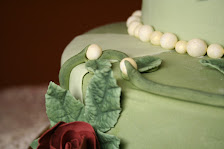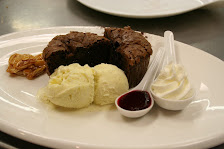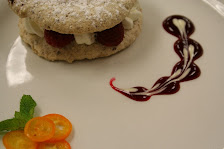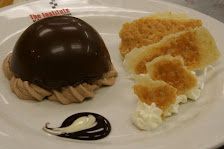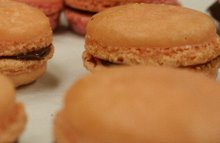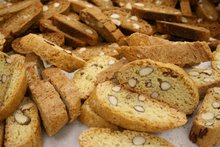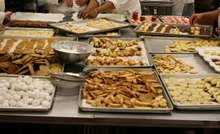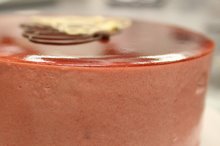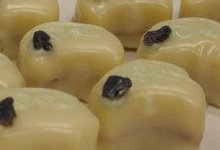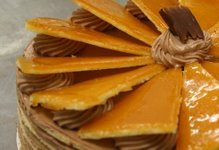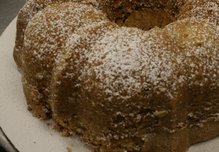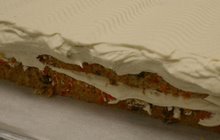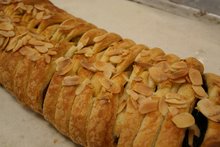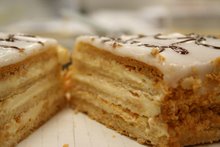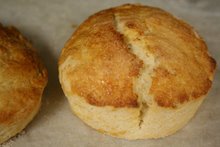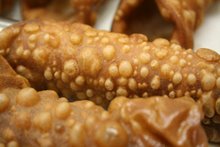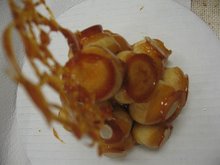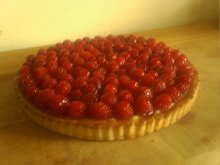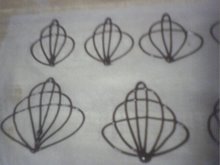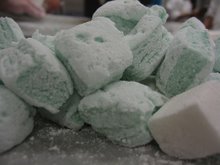Thursday, January 17, 2019
Monday, February 2, 2015
Sunday, February 23, 2014
Tuesday, February 26, 2008
Well, obviously, it's the end of the road here at school: graduation day is here at last (is this the fourth one of these for me? I think it is... who keeps track of these things!?), replete with champagne, portfolios, the rather déclassé tall hats, and pictures with the folks.
My pants are tight. But not as tight as they were on the last day of the cake section, thank God.
Obviously the end of school is not an end in itself, as we all part ways to seek the shores we got in these boats to find in the first place. (As anyone with even elementarily developed math skills should be able to tell, it's been a while since graduation day, and I've been in the field for some months now, but I can still taste the fear on my tongue as I walked out of my office of eight years for the last time, "leaving it all behind" in pursuit of my true calling. Not for nothing, it was hard to do and I miss the old career at times, but as future writings will hopefully communicate, I love what I'm doing, ardently.)
Not that you require disclaimers, but here is one anyway: I hope you don't think that eighteen-day entry I just posted was copping out. I have to tell you, things like cake and chocolate are skills that people spend decades practicing, under immense pressure and with acute focus, just to learn them capably enough to make them suitable as professions. As such, we spent several days just getting a grasp on each project I mentioned in that entry. This isn't to say that it was boring, but my rhetorical skills are limited to the extent that to have elaborated further would have made it seem that way. Hence, I compacted the information into a reasonably succinct account of our final days so you could continue to enjoy my writing in the manner to which the previous forty-two posts had accustomed you.
I am glad this particular blog is at an end. Lately especially, I have had so many thoughts racing through my head, about bread and pastry and food, that only by writing them down will I be able to pin them down long enough for them to materialize fully. Rest assured, if they form into something that I feel it worthwhile to babble about, you'll be the first to know. Both of you.
Thanks for reading.
The last two projects, special-occasion (read: wedding) cakes, and molded chocolates, were all about the art of conforming. Human intuition tells us when working with things like chocolate and fondant - that great mass of sugar one rolls out and turns into cake upholstery - that we would simply need to find a way to conform it to our needs and to make it work. Allow me to elaborate.
Let's begin with fondant. (Don't be scared by this word. Some people say fahn-dahnt, putting equal emphasis on both syllables, which I find awkward as it rolls across my my absurdly delicate palate. I say FOND'nt - which sounds more melodic to me. Anyway.) Fondant is something like taffy in consistency, only not quite so sticky and perhaps marginally firmer; I suppose that would depend on where you shop for taffy. It takes color remarkably well, and can be smoothed, through no small efforts of legerdemain on the part of the baker, to a finish as fine as the sheets they use at the Four Seasons. It is hence extremely popular for fanciful cakes, particularly at weddings of course. Fondant is somewhat the operatic soprano of the pastry world: it's certainly sweet but the question of substance does come up, it doesn't take direction particularly well, and once it sits somewhere it's pretty much staying there. (That was a little mean but I've earned it.) This terribly aggravating component of our final cake-related project stumped nearly all of us, myself most definitely included. In the end, I was able to choose my decor elements cunningly enough to conceal any areas that brought to mind the skin on and around the less savory parts of an elephant. But only marginally, I must add; I got by on luck.
The one aspect of this process I was able successfully to objectify was the fact that we were instructed in rolling the fondant very thin. I was greatly relieved because, as anyone who has been to a wedding or three knows, the stuff is not really good eating; it's rolled off as frequently as on. When it's three-eighths of an inch thick, it poses a reasonable barrier to enjoyment of the cake it's covering. As the fifty-five-member crowd that eventually eviscerated my cake can tell you, mine was fortunately thin enough to avoid this obstacle. Another fortunate aspect of this educational segment was that it allowed me to realize I wouldn't want to decorate cakes for a living. Occasionally, sure, especially now that I know I can do at least a decent job of it, but there must be easier ways to pay the bills.
Concurrently with our lessons in rolling and draping fondant, we were introduced to another use of it. By adding carboxymethylcellulose, a plant- and acid- derived chemical, we turned the fondant into a substance called gumpaste. Adding CMC dries the fondant so that it can be more easily worked with and rolled more thinly, after which it dries completely for use in lasting, usually floral, decorations. Edible? Technically, yes, but not advisable or practical. In any event, this is where pastry work becomes the most detailed. The fine brushes come out of the case, and powders, dusts, and dyes are applied, using a variety of odd tools unidentifiable in normal society. If proper care is taken, gumpaste and its entourage can be used to create perfectly realistic floral details. I kept returning to azaleas for some reason, and so chose to use them as the primary decor elements of my springtime-wedding-themed cake. I bunched them up with some roses, mimosas, generic "five-petal blossoms," vines complete with vaguely iridescent (and therefore to my mind dewy) "buds," and leaves. Oh, and ladybugs, which I thought were a nice touch, if a little precious. I stood back, admired the cake, and then, as mentioned, shared it with fifty-five or so colleagues in the career I'd soon be leaving.
From fondant, intractable though it seemed at the time, we progressed to taming an even testier shrew: good old chocolate. The term "tempering," which we've all heard, simply refers to cooling and agitating melted chocolate (albeit in very specific ways) so that the cocoa butter's crystal structure develops in a very defined and organized way. This results in chocolate that, once resolidified, has shine and snap. If you want to see what happens when you don't do it properly, just go melt some chocolate in a little bowl in the microwave and wait a few hours. The pasty, crumbly mess that results clearly wouldn't be suitable for use as food. To temper it properly, close attention must be paid to temperature - too high and the cocoa butter separates, "breaking" the chocolate and bringing it out of emulsion (this is bad). Once it's cool enough and you have established the beginnings of a crystal structure (through any of a number of methods more complicated than I feel it necessary or practical to explain fully here), the chocolate is then agitated (usually by stirring), to spread that crystal structure around the rest of the chocolate. When using chocolate as an ingredient, tempering is typically not bothered with, but it's compulsory if the chocolate in question will be standing alone or encasing something.
Our first project with tempered chocolate was the creation of molded chocolates, which we may think of as truffles. They usually wind up as small, shiny, scalloped shapes, shells, hemispheres, pyramids or what have you, filled with caramel, fruit creams, ganache and the like. They're the things in boxes that you pinch and put back if the filling is just too repulsive. Not terribly difficult to produce satisfactorily, if you can get past the fact that the molds you make them in require cleaning with cotton balls. Clearly, the chocolate used in molding required a good temper (in terms both chemical and emotional), but it was crucial to an even greater degree in our final-final project, our chocolate showpieces. Mine, born of a love of the Alien films and perhaps a latent desire to disappoint myself, was to be an offworld flower rising from a turquoise pond (poured sugar), with a blown glass (sugar) bulb as stamen, and broad, reaching leaves (chocolate) sheltering its own (white chocolate) sprout-babies. If it sounds bizarre in concept, perhaps I succeeded. The irony of calling it a showpiece endured, as I would prefer no one had seen it. (But, since they all got to, I've posted a picture here as well.) It was an important exercise, anyway, in learning not only how to construct things with chocolate, but in discovering the importance of restraint when being creative.
In the end, I found pastry to be about the craft of conforming. The things which must conform, however, aren't the butter, sugar, eggs, custard, filling, topping, dough, batter, icing, piping, spice, flower, fruit, jelly, nougat, caramel, paint, powder, nut, sauce, covering, and chocolate that we're working with, but rather our attitude toward and attention to each of those things. When we learn to listen to the crackle of a crust as we pull a loaf of bread from the oven, to feel the spring of a perfect muffin, to see the shine on a layer of caramel, to smell the butter rising in waves from a fresh croissant, to taste the acid of a strawberry as inquisitively and with as much pleasure as its sweetness, we realize that to learn from food we need only observe it with a little care. It teaches us as much about our own desires and choices as it does about the world around us.
And in the end, what does it mean to Become The Baker? Evolving into one's own skin? Creating substance from ash and water? Bringing many diverse elements into one resonant confluence? Perhaps it means these things, but maybe it's something simpler. To my mind, baking simply brings into focus how little is truly needed for man to survive. From such little as flour, water, and a few grains of salt, man has lived through the millennia; twenty thousand years of bread just can't be wrong. Baking of course encompasses a far wider circle of technique and ingredients, not to mention purposes, but the principle is still the same. Through ingenuity, technique, or just plain physics, what comes out is always more than the sum of what went in. It's this alchemical aspect that brings me back again and again to the oven, and which will continue to do so for the rest of my life.
I Am The Baker.
Sunday, October 7, 2007
It sounds like Valentine’s Day, I realize, but this little foray had little in store when it came to romance. We revisited chocolate plastique, which you may recall from Days 68 and 69 (adorning the cake I gave to the stranger on the subway).
The first time we worked with it, all we had to do with chocolate plastique was wrap a cake in it, and then fold little rectangles of it into abstract crinkles. Now, however, as we continue to learn about those greatest of all pastry displays, wedding cakes, the focus is on pretty little things like bows and flowers. We begin to appreciate, difficult though it seemed at the time, how easy it is to make abstract things. The process for bows is pretty straightforward: once you’ve rolled the chocolate plastique nice and thin, cut it and fold it into bow shapes. Not exactly a thrill ride, but don’t worry; the lack of excitement there was made up for once we got to roses. As with marzipan, small petal shapes are cut from thinly rolled chocolate plastique, and placed between two sheets of parchment paper. These small cutouts are then placed between two sheets of parchment or acetate, and the second skill (the first being rolling) is applied. With the back of a spoon, you press gently on each petal, moving in a circular motion. By paying extra attention to the edges in this step, you can give each petal-to-be an irregular ruffle along its edge, as real rose petals often have. This is by far the hardest part to learn. While you work to master the motion, figuring out how to achieve the proper shape as you go, you constantly have to pay attention to thickness. If they’re too thick, they’ll look cartoonish, and if they’re too thin... well, they can’t be too thin. Thin and delicate is really what you’re going for, but obviously this results in special challenges in handling. Once you’ve managed to press out at least fifteen (plus about thirty extra in case two or fourteen of them break), you can begin constructing the rose. This third skill was perhaps the easiest. All that’s really left to do is attach the petals to a small cone of chocolate plastique, first a layer of three, followed by a layer of five, followed by a layer of seven, gluing each on with a little egg white as you go. I would recommend cheating like I did: refrigerating the pressed-out petals enables you to actually use them; a benefit in my mind. Once I’d figured out that extra step, it became a very gratifying exercise, and one which I can see using in the future should I need a bit of elegant décor on one cake or another.
This repose from icing was almost a sort of mini-vacation. After the buttercream, chocolate plastique seems to melt at an incredibly slow pace, so this was a chance for us to spend a little more time in search of perfection.
Which eluded us nonetheless.
Monday, September 24, 2007
If you're excited by the thought of stepping into the stale, shallow water of a neglected, moonlit canal in the middle of nowhere, casting in a short, baited line with a steel lead at the end, and pulling up a shiny, slithering eel to squeeze about hoping that something exciting might happen, then I suggest you consider the art of buttercream piping.
Let's talk about buttercream for a moment. Here in America we tend to prefer a coarser sort of frosting, one that's plentiful enough in powdered sugar for us to feel its not necessarily unpleasant grit on our palates and between our teeth. This supersweet frosting is an American classic; the recipe is even on the box of sugar. When we're exposed to a true buttercream (like the ones we've been making since Day 11) for the first time, it tends to shock us slightly for two reasons: it's not extremely sweet, and it's got that used-car-dealer quality of being almost too smooth to be trusted. Many of us turn tail and flee back to Gritty Sugarville, but if you give its silky cousin a second chance, you may surprise yourself by becoming addicted to it. (Allow me, as if you had a choice, to theorize about this phenomenon for a moment. If you consider our general food aesthetic as a nation, dessert equals sweet. It's a pretty one-dimensional sort of characteristic that has come to be the guiding principle in our hunt for dessert. Obviously there are other things we look for - texture, temperature, color - but from the standpoint of flavor, we look for "sweet" above all others. The somewhat more European (particularly French) tendency is to judge for other flavor components; buttery, for example, and spicy or herbal. This isn't, of course, to the exclusion of sweet, but the sweetness doesn't override the other flavors to the extent that you'd find in, say, a classically American cupcake. Even a palmier, which is simply a thin slice of puff pastry rolled and folded in pure sugar and baked to a deep golden brown, has a deeper and more complex flavor: nuttiness from the wheat, more nuttiness and a slight bitter note from the caramel, and the butter's... well... butteriness. The sugar is on stage, but there's no spotlight. The textures of American foods, too, tend to steer away from buttery, whereas European cookery and baking call for far more of it as a rule, the resultant texture being just a side benefit. Given these tendencies of the American palate, when we taste something that should be pretty familiar, like icing, and it's not only less sugary than we expect, but also has an exotic texture, our neophobia kicks in and we tend to revert to what's old and comfortable - in this case, gritty frosting. There's nothing wrong with the gritty stuff, but don't exclude the buttery stuff. Just make sure that you get a good one - make the Day 11 recipe if you have to. Its constitution should be moderately soft but not melting (until it’s on your tongue); its flavor should be sweet and buttery, with clear but not cloying highlights of whatever essences have been added (rum, vanilla, or the like); and its texture should be beguilingly satiny. You’ll like it once you’ve had a good one twice, you’ll see. I digress.)
Obviously a very common treatment of buttercream is in piping, and so began our lesson, and our segment on Cake Decorating. We started with the commonest of shapes, the shell. Now here’s where the eels come in. You fit a plastic pastry bag with a metal tip that has a star-shaped opening. Then you fill the bag with huge gobs of buttery icing. Buttery icing, by the fault of its own magic, melts at just a few degrees below body temperature. So, in keeping with the theme of pastry in general, you have to do it accurately, and you have to do it quickly. As you attempt to squeeze out practice shell upon practice shell, you realize that you’ve got melted buttercream (in other words, melted butter) all over your hands. Now you’ve got a giant, squishy, slippery mess between your hands, and the goal is to squeeze it in a very precise way in a very controlled rhythm. No problem. This eel even has teeth, in the form of the many-pointed star tip, with which, shocking as it may be, I managed to stab the webbing between my forefinger and thumb.
Hesitant as we were to retire from two full days of piping practice shells, Day 78 brought us to piping buttercream roses. This is clearly going to be a handy skill for those of us who go on to do any cake decorating, but it’s painfully obvious as well how much practice we’ll need before we can consider it a marketable still. If I ever get any good at it, I’ll remember this phase of my artistic life, perhaps, as my Salvador Dali Period. The beauty of a shell is that, even when the icing is melty, it’s still allowed to lay down. Petals, they tell me, are supposed to point up straight. No kidding.
After a day and a half creating these eerie miniatures - perfect set pieces for a Tim Burton film about a forgotten garden - we began working with royal icing. Made using egg whites and sugar, royal icing hardens to the point that it’s unpalatable; it’s the stuff you see all over gingerbread houses not only as a snow effect, but quite literally as glue - more to the point, mortar. Its very effective use as a décor element makes it a common medium for writing as well, which we learned to do using a cornet. Melting is no longer our problem, but speed is still a factor, since this cement is the quick-drying kind. It’s taken a number of decades for my handwriting to improve to its current, terrible level. Hopefully, if I practice forty or fifty quick times a day over the next twenty-something years, my kindergarten-royal-icing-scrawl will also be marginally legible by the time I’m in my mid-fifties. I’ll keep you posted.
The timbre of these first four last-quarter lessons is different. Everything we’ve created up to this point has been something we can learn to do well fairly quickly (with the exception of cornet work, naturally). These new skills are ones that will require hours and weeks and years of practice and honing before we’re even modestly proficient.
Wedding cakes, all of a sudden, seem a whole lot cheaper.
Wednesday, September 12, 2007
The final four days of our third quarter (of four, for those of you who are a little slow with the arithmetic), saw us occupied with two activities: plating desserts and our final exam. Contrary to what you might expect, the former task received far more attention than the latter.
It sounds simple, and in a sense, it is. Plating means simply putting what you have created onto a plate in an attractive and sensible fashion for presentation. It must be somewhat trickier to teach plating than other parts of the course, since to do it properly requires good taste, which is not so easily imparted if the student doesn’t already have some. The main time-consuming aspect of the three days we devoted to it wasn’t about geometry or strategy or art, but production. Altogether, we turned out thirteen sauces; five types of cookies (as if we needed more of that!); seven mousses, curds, and confits; ten kinds of cakes and tarts, which, I suppose, were the actual desserts; four types of candied nuts and nut brittles; a giant pile of crêpes; fourteen ice creams and sorbets; and five or six additional décor elements like marshmallows or apple chips or spun sugar. (I was fortunate to have been assigned one of the few fruit components, which, after several pounds of cookie dough, was awfully refreshing.) Getting these things all together was obviously time-consuming, but once accomplished, the possibilities for combining them were limitless. If we were to use just four of all the components at our disposal, we could make something like 424,270 different desserts, according to my math skills (and therefore probably some other number altogether). We were directed to pay attention to texture, color, and flavor of course, keeping an eye open for negative space. In a flurry of activity, we assembled our desserts into fanciful and often hideous displays, from the crimson cast-sugar disc that arced gracefully atop a pear tart, echoing the reduced-wine sauce below it, to the drizzling of caramel sauce over the pinwheel arms of a candy-studded cake, in an excess that made it look quite like a frightening, melted carousel.
Philosophically speaking, it was exhilarating to whip up so many different dessert components so quickly, because it made us realize that we were now capable of doing so without panic attacks or fainting (not counting sugar coma). It was also a milestone because for the first time we addressed the issue which we will obviously encounter as we enter the kitchens of restaurants around the world: making our products look as good as they taste (which has been consistently excellent). My particular extraction of this philosophy resulted in a number of different combinations, among which three were particularly memorable. First, that old lounge act from every joint in town:: Molten Chocolate Cake with Vanilla Ice Cream, which I accompanied with whipped cream and raspberry sauce, along with a little nougatine (which you undoubtedly remember from Day 17) for textural interest. I proceeded then to the slightly nuder pasture that was my raspberry dacquoise. Having decided to go for a more minimalist approach, I accompanied it with only raspberry sauce striped with white chocolate, and a white chocolate curl on top of the dacquoise, echoing the sauce. Just before submission (oh, yes, we had to submit each plate to Chef for review, and, presumably, grading), I had a sudden burst of irrelevance and opted to do a little mint-kumquat-confit-thing. It worked though; I got a thumbs up on that one. My daring spurred to higher levels, I opted to finish with a molded chocolate mousse, enrobed in ganache, atop a bed of chocolate whipped cream. I accompanied this with mounds of regular (that is to say, non-chocolate) whipped cream, between which I had the brilliant judgment to place large placards of mille-feuille (Day 43). A little mound of whipped cream is not designed to keep a dense tablet of mille-feuille erect; it’s not a structurally sound configuration. Having decided (and announced, of course: a real shock) to do it, I carried on and managed to get them to stand up just long enough for a drive-by evaluation and a quick snapshot. The waiter that could carry this to the dining room, though, and keep those things standing, is worth his weight in gold. Easy as it is to assemble desserts when one has sixty or so components to choose from, and putting aside issues of individual taste (or exemplar lack thereof), I think the main lesson here was to realize that we have a long way to go in terms of learning what’s practical.
After the thrill of mock restaurant service, we came back to the refreshing simplicity of yellow cake. We each baked two layers of cake which we filled and frosted on the following day for the practical portion of our final exam (where refreshing simplicity dissolved with great haste into bleak reality.) I received a few points off for inconsistency of icing thickness and off-center adornments (two of my icing rosettes were not equidistant from those surrounding them), but in the end walked away none the worse for wear. The written part of the test covered all these cakes we’ve produced over the last several weeks. We know we’re not quite done with cake, though, as more than half of our last quarter, just around the bend, deals with wedding cakes.
And we round third base.
Sunday, June 3, 2007
I never want to see another cookie again. No, really; I might actually mean this. Okay, probably not, but still, I’m a lot closer to saying that truthfully than I’ve ever been before, and I’ve O.D.d on cookies a number of times throughout my history of radically prodigious eating. When our class produced cookies, though, it wasn’t a question of eating a few cookies’ worth of dough from the bowl and then another few ( i.e. several) cookies after baking. Rather, I wandered freely from station to station, tasting each raw dough (a number of times) and then, ultimately, quality-controlling the cookies after baking as well. Allow me to propose a metaphysical excuse for this behavior based on the very nature of why people like cookies to begin with. They’re generally small, and therefore, seeming harmless, it’s conceivable that nearly everyone can enjoy them (if in somewhat more reduced quantities than your host does). Also, since they are so small, you can have a few of them and experience vastly different flavors and textures in the span of one plate; a creamy lemon bar followed by a crunchy almond biscotto (yes, that’s the singular) topped off by a chewy oatmeal... what’s not to love! Not much, I can tell you from my several thorough visits to each station.
Divided into teams of two, we all prepared many dozens of cookies. There are some tricks to making consistently high-quality cookies, but only a few; otherwise making them en masse isn’t very different from making them at home. Here’s a tip for drop cookies (like chocolate chip or oatmeal raisin, say): chill your dough. Seems simple enough, and in some recipes it’s required. For drop cookies, it helps them bake in a much more shapely fashion, since they all go in at the same temperature and consistency and therefore all spread in a similar manner. Given this need to chill, we made our cookies over two days. Some of the cookies were mixed and baked and cooled on day 1, but much of the dough (that which escaped my notice, anyway,) was held over and baked on day 2. After baking the last of them, we took a step back to survey this ocean of cookies we had just created. When over a dozen people have baked several dozen cookies each, what’s required is some serious organizing, the kin to which I have only ever experienced as an observer hovering outside my mother’s kitchen the week(s) before Christmas. Our first step in classifying them was to divide them into two categories: European and American.
The European-style cookies we made included both vanilla and chocolate sablées – sandy straight-ahead cookies which are delightful plain but which are often layered together to make checkerboard cookies; Linzer augen (OW-ghen), which are actually quite good when they haven’t been sitting on a convenience store shelf for several months while their jelly-filling dries out; mamoul, which look like peanut butter cookies but which are in fact filled with a filling of the vastly underappreciated date; Sicilian fig cookies, which are a plain sugary dough wrapped around a rope of fig filling and cut to resemble the letter H or perhaps a pair of chromosomes; macaroons (here the classic French almond-ganache-hamburger style, not the American coconut variety); spritz cookies, like the dry, crumbly cookies with maraschino cherries mashed into the ends of them that every Italian bakery sells by the ton that people pretend to like because they believe them to be fancy; palets aux raisins, amandines, and chocolatines, which are all small, round cookies which are either studded with raisins or made with almond flour or chocolate – tasty, snappy little bites, really; delightfully caky orange- scented madeleines; pignoli (peen-YO-lee), small, Italian shortbread-like cookies studded with pine nuts, tulipes – flat cookies of either vanilla or chocolate which are slightly molded immediately after baking to create a specific shape, such as a small edible dish or a curved cookie; crisp almond biscotti; and Scottish shortbread. All of these cookies were delightful in that they were delicate and refined, many being as rich and satisfying as a much larger dessert.
The American cookies were of a clearly different ilk, including some powerhouse brownies; lemon squares; Tennessee icebox cookies; pecan balls (the dough of which I must confess I ate most unreservedly – if pressed for the truth I would probably admit to perhaps nine cookies’ worth); rugelach, the rolled-up Jewish treat whose sublime flaky dough is made from equal parts flour, butter, and cream cheese (it works, it works well); oatmeal cookies of course, whose chewiness benefited from the inclusion of molasses; pecan sand tarts (like the classic pecan sandy only dressed up to go out); and, of course, that crown jewel of American (and, in your author’s opinion, all) cookies, the chocolate chip. Like their European cohorts, these cookies were all excellent and terribly irresistible, albeit in a less subtle way. The really impressive aspect of the experience, however, wasn’t the taste, but the sheer quantity. The fact that we learned how to execute so very many cookies in a short period of time is significant, as anyone working with me in a bakery sometime in the future will undoubtedly tell you.
To finish the lesson, we divided our thousands of cookies neatly onto trays, as might be served at formal banquets or displayed at fancy bakeries, which we presented for evaluation.
After which I dumped my cookies into a giant box and waddled home.
Thursday, May 10, 2007
It’s been tricky finding words for this next cake. But I suppose that’s true of any cake whose execution requires the use of a pasta roller. The Chocolate Ribbon Cake, as it’s called, is a chocolate lover’s dream… layers of chocolate cake filled and iced with chocolate mousse, wrapped in a layer of chocolate plastique, and decorated on top with curly ribbons in the same medium. Cranking out cakes and mousses these days is pretty simple; literally cranking out paper thin sheets of chocolate is another matter.
Chocolate plastique is made by adding a small amount of corn syrup to melted chocolate. Once this re-hardens, you knead it until it is smooth and pliable; the texture reminds me of the probably toxic modeling clay that I used to play with more years ago than I care to count. Using it to sculpt things like baroque flowers is a treat we’re saving for down the road a bit. For the chocolate ribbon cake, the grandest assignment on the proverbial chalkboard was to make rectangles. Lots and lots of rectangles. The first of these, of course, was a very long rectangle, a band with which we covered the sides of the cake. Obviously you don’t want the people eating this cake to get such big globs of this chocolate material in their mouth that it would leave them singing Everything I See Looks Like a Ribbon Cake To Me, if you catch my drift. It’s a little like… well, modeling clay, as I said. To avoid just this predicament, we rolled the plastique to incredible thinness using the pasta roller. Now, I wasn’t there when the ingredients for our plastique were measured, but it seemed pretty straightforward. I don’t know what went wrong exactly, but my team’s came out dramatically different than everyone else’s. It was extremely melty, if that’s a word, and it had a peculiar interest in wrapping itself around the pasta machine’s rollers rather than gracefully passing through them. When chocolate plastique does this, all there is for it is a light dusting of cocoa powder, but if you can’t imagine how dangerous that is, go dip your finger into some cocoa powder and lick it off. Gingerly dusting our glob with two-molecule-thick layers of cocoa powder, we coaxed it through the rollers, gradually narrowing them, re-dusting at the first signs of trouble, until it was thin enough to be applied to the cake (not to mention palatable). We wrapped our band around the sides of the cake as smoothly as possible, sealing it at the seam.
The balance of rectangles were much smaller, about two inches by three. We made dozens of these after rolling out the remainder of our plastique. Then, as if we hadn’t teased it enough, we pleated up each small piece and laid it on top of the cake, overlapping each with the next. As unhinged as I had become, beset by roller-woes, I was forced to admit to myself after completing half the top that the cake was taking on a very elegant aspect. In quite a contrast to the buttercream and ganache we’ve been covering our cakes with so far, its plastique covering lent this cake a very fabric-like appearance. (Surely this is a hint of what’s to come when we undertake our segment on wedding cakes in the final quarter.) Continuing around the entire circumference in this manner, and then again in smaller circles, we carried on until the entire surface of the cake was safely tucked away. Some simple decorations on the top, including our introduction to gold paint, and the cake was ready for display in any bakery’s window.
I was pleased with the way my cake looked, and, clearly, excited about how it would taste. Later, however, an odd thing happened. As we traveled home, I gave the cake to a random woman who came upon my classmates and me on the subway. There can be only one of two explanations for this. Either I had reached the point where the Voice of Pastry is calling out to me less forcefully, or I had simply had too much sugar during class. I certainly hope that the latter is the case.
The former is too depressing.
Thursday, May 3, 2007
In a journal of superlatives such as I have created here, it is difficult to present an accurate account of this next confection. Rather than going on an on and saying things like: No, really, this one is my favorite, I will summarize in a word. Paris. It’s the Paris of desserts. It is refined and elegant, mysterious and a little proud, expensive, complicated, torrid and searingly beautiful. I’m sure there are many other desserts with the same name: Symphonie – a simple Google Image search confirms this suspicion. I defy any of them, however, to hold an audience quite as rapt as this one managed to. In a rare career crossover attempt, I shall indulge myself briefly in the obviously begged comparison of this dessert to a symphony. (For you Classical music geeks, think of it as inside-out R. Strauss.)
The basis of any solid symphony is melody (let’s not get into a musicological debate about this; just roll with me). It’s the tune people hum after the show; a mental imprint of the experience. The number this dessert sang was Chocolate and Hazelnut, a club favorite for centuries. The dress it wore was a showstopper too – a rich satin robe by Ganache, with gold accents. Everyone who was there whistled long after the show.
You have to have rhythm if you want any kind of texture. This cake was almost Bartók. From the snap of the chocolate on the bottom to the crunch of the ground hazelnuts caught up in each chocolate cake layer to the praline buttercream, smooth as silk between each one, the full spectrum of texture was available to anyone who had a bite.
Finally, the coalescence of all the elements: the harmony. Here, no dynamic was too loud, no phrasing too blatant. All the elements of this marvelous work converged in Mozartean balance, each note exactly where fate would have it put, each voice exactly where it belonged in the context of those surrounding it. It was so perfect as to seem plucked from the air.
Alright, so what the heck was it? It took us a number of days, with multiple sets of pans, mixers, freezers, and decorating supplies, to create all the elements of the symphonie. We began by painting a rectangular layer of hazelnut sponge (like a génoise) with some chocolate. Once that had set, we turned it over, making the very bottom of the cake a sheen of slightly snappy chocolate. We then moistened the cake layer with kirsch-flavored syrup, and iced it with a layer of whipped ganache. Not ordinary ganache (half-chocolate-half-cream), though. Here, we used ganache riche. (Five points to the person who can guess what riche means in French.) This ganache has a bit more chocolate in it and so imparts a deeper chocolate note. When that layer was down, we iced it again, only this time with praline buttercream, which is essentially buttercream with praline paste whipped in. Think of praline paste as peanut butter, only slightly more liquid, and made from hazelnuts. (I know; it’s pretty awesome.) Usually, in a buttercream, we would whip egg whites with sugar and eventually add (lots of) butter. For this one, though, we whipped egg yolks with sugar, and added (still lots of) butter. It made it quite as rich as you would imagine it might. Atop this second layer of filling, we placed a layer of almond cake called biscuit joconde (bis-KWEE zho-COHND). My sources tell me that “jocund,” as it would be in English, means “characterized by joyful exuberance.” I see their point. This layer was treated the same way as the lower one, with syrup, whipped rich ganache, and praline buttercream. We placed a third layer, this time hazelnut again, on top, and moistened it with syrup. At this point, we did not continue as before with a dual layer of icings, but rather with whipped ganache only, which we spread level and to exacting smoothness. The cake was then allowed to refrigerate and firm up before the final steps. The finishing touches involved pouring a sleek liquid coat of (ordinary) ganache over the top, strategically dropping some gold leaf at the corners, and, in what we were informed was the traditional way, inscribing the name of the dessert across its front, in chocolate ink from our favorite pen, the cornet. So to tally, for those including myself who have lost count, the layers from the bottom up go something like this: chocolate, hazelnut cake, whipped rich ganache, praline buttercream, biscuit joconde, whipped rich ganache, praline buttercream, hazelnut cake, whipped rich ganache, poured ganache. (Not counting syrup and decorations.)
It sounds like too much, I realize this, but once again you must trust me; it’s not. The finished cake is perhaps three inches high, each layer being incredibly thin. All these rich ingredients come together in the right proportions, and form a dessert that is perfectly balanced in weight, sweetness, flavor, and texture. One friend who picked up a piece while in her car called me from her cell phone before having bothered to swallow (I was praying she was at a stoplight), and stated that it was hands down the best cake she’d ever had. I have to say, I was in agreement. This symphonie truly lives up to its name, as so few desserts bearing such a name ever could. And after eating it, not because it was heavy but because it was so immensely satisfying, you remember another integral part of any line of music: the space in which you can luxuriate for a fleet moment, before the effects of what you’ve just experienced can be carried away by something new.
Rest.
Sunday, April 29, 2007
It would seem that we’re in the middle of the two-or-more-day-cake phase. These days it’s always make the cake layers, freeze them, come back again, and do something to them. This has its advantages though; imagine this: you’re cutting a cake. Horizontally. Would you rather do this when the cake is nice and soft, hot, tender, and fresh from the oven? Or would you rather do it when the cake is a solid and forgiving block of what is basically frozen butter with a little starch, sugar, and egg thrown in to keep up appearances? Me too. So let’s proceed with the understanding that these creations of ours can be accomplished by actual human beings, right in our own homes. The two-day aspect isn’t continuous, so don’t be daunted. It’s not quite a lot like painting your house.
The particular Two Day Cake we cranked out this week was a miroir (meer-WAHR). The miroir (“mirror”) is a classic French dessert composed of layers of sponge cake which are moistened with syrup, filled and iced with a bavarois, or Bavarian, and topped with a thin layer of nappage. For clarification, allow me to state that the Bavarian I’m talking about here isn’t a person dressed in short pants with suspenders and a jaunty little feathered cap. No, this is a different kind of polka-dancer, where a purée of fruit (or another base of similar texture) is mixed with gelatine, and then folded together with whipped cream. The tricky part is the folding. People are afraid of folding, and understandably so; if you do it too forcefully, whatever it is you’re folding will deflate. Why not simply do it slowly, then? The Bavarian is the perfect answer. The gelatine which is melted into the base must necessarily be slightly warm, while the cream must be at least cool. The trick in folding them together is to do it gently enough so that the whipped cream isn’t completely deflated, but quickly enough that the gelatine doesn’t set when it comes in contact with the cream. Failing to accomplish the latter would result in a creamy sludge with what would seem like Gummy Bear droppings scattered throughout it, and we clearly can’t have that. Nappage (nah-PAZH), from way back in our first week, is essentially jelly with extra pectin. To construct the cake, you place a layer of sponge in a cake ring (think cake pan without sides), moisten it, top it with Bavarian, another layer of cake, and so forth, ending with a perfectly even and smooth layer of Bavarian. You chill this until set, and then pour a pool of warm nappage on the top, creating the mirror effect for which the dessert is named. Using a cake ring is doubly exciting. Not only can you create a cake with tremendously even sides, but when the time to remove the ring has come, you get to blowtorch it until it’s loose enough to simply slip off.
Some people have issues with the Bavarian (which is, by the way, what Bavarian cream really is; that stuff in donuts is a lie). The texture, admittedly, is a little unconventional, being somewhere between mousse and Jell-O, and nothing goes worse with cake than Jell-O. It’s also understandably off-putting to consider a gelatinous dairy product. Once you get past these things, though, it’s a pretty enjoyable dessert. The one I fashioned was strawberry (and before you raise the hypocrite alarm, let me state that both the purée and the nappage were (presumably) made from fruit when it was in season), decorated on top with some more voluntary cornet work.
What’s happening to me!?
Monday, April 23, 2007
I’ll admit it: these haven’t been light little wisps of pastry we’ve been creating. You can, therefore, imagine my pleasure at finding that our most recent project was very different than the chocolate-cloaked-or-caramel-topped-or-sugar-enrobed-or-cream-cheese-infused items which we’ve been producing. We were finally introduced to the génoise, a classical French sponge cake which is always soaked with syrup during assembly. This cake is made by a whole lot of folding. Egg whites are whipped with a bit of sugar. Egg yolks are whipped with a bit of sugar. Dry ingredients, like flour, cornstarch, baking powder, and salt, are sifted together. The yolks are folded into the whites, and then the dry into the wet. That part (no fat other than egg yolks, did you notice?) people follow. It’s the whole syrup thing that sounds disagreeable when people first encounter it, but allow me to explain (as if you had a choice). Too much, yes – nasty, gross, soggy cake; who needs it? Too little, however, and you have an equally unappealing, dry layer which will make even the lactose-intolerant cry out for milk. Just the right amount, though, and you’re biting into a pastry that is the perfect (and I mean perfect) level of “moist,” that ever sought-after characteristic of cake. As with last week, we baked the layers with partners, but for the finishing we were left to our own devices; I chose raspberry. (Now, don’t think me some great hypocrite when it comes to seasonal fruit. We had to use something, and I chose raspberry. I’m not proud of it, but my pride does not extend to getting a failing grade for the day.) For the syrup, we used framboise, which is a raspberry eau-de-vie (a clear, unsweetened, 40% alcohol liquor distilled with the essence of a plant) combined with simple (sugar) syrup. After soaking the first layer, I topped it with pastry cream that had been scented with framboise as well, and dropped a few raspberries around in it. The second layer went on and got soaked. Then, the whole cake was iced with sweetened whipped cream, adorned with a few additional raspberries, and some sugared slivered almonds, just for some textural diversity. I will admit that when conceptualizing it, even I thought it would be overpoweringly raspberryish. It wasn’t though. It was airy and fruity and extremely cheerful. Like me, most of the time.
All balloons pop eventually. We countered this useless lightness with one of the heaviest and certainly best things so far, in the form of a chocolate chestnut cake. We soaked a layer of chocolate génoise with syrup flavored with kirsch, a cherry eau-de-vie (you couldn’t really taste the cherry, it just added depth; let’s move forward with that understanding). We then topped this first layer with alternating stripes of whipped ganache and chestnut buttercream. Other than that Christmas song, chestnuts don’t seem too popular here in good old America; they’re much more beloved in our parent England. In any case, they’re delightful, and one thing that further enhances their resident richness is to incorporate a puree of them into a buttercream. Trust me. The next layer of the cake was added and again soaked, and then, like that fancy cake of a few weeks ago, iced very evenly with whipped ganache. After chilling and firming, we poured liquid ganache over the whole thing, creating a shiny finish that’s only fitting for a cake this good. I decorated mine with some cornet work, and decided to further embellish it with a little gold dust. This was a mistake, because there was moving air in the room. Not only did some random current cause my first attempt to add a dot of it turn into a comet-shape (and therefore all subsequent ones, in an attempt to be consistent), but when someone walked by quickly, a whole random smattering of it landed elsewhere on my cake’s surface. Not to worry, it’s gold dust. It’s innately appealing.
And once they took a bite, I’m sure they all forgot.
Saturday, April 14, 2007
Days 58 and 59: Babies. Mamas.
If you enjoy getting your entire being sticky by covering it in repeated coatings of pasty, semi-liquid sugar which will promptly solidify on your skin and thereafter mercilessly rip out any hair that had the misfortune to have been in the spot where this tacky sludge was originally applied, you might consider making some petits fours glacés (petty four glah-SAY). These little treasures have the dual condition of being adored by the general populace and abhorred by their creators. The assembly isn’t so esoteric: make a couple of frangipane layers, chill them, sandwich them with some strained and therefore seedless raspberry jam, chill them some more, cut them (perfectly), chill them one more time, then glaze and decorate them. That’s ostensibly easy. The common glaze for these is poured fondant (don’t struggle with it, just say FOND-int; you’re American, and that’s okay), which is essentially sugar with a small amount of water (and sometimes corn syrup) added, and mixed into an opaque and pearl-colored sludge. Said sludge pours beautifully as long as it’s somewhere within the generous temperature range of about 110 to 111 degrees Fahrenheit. Okay, it’s a little more generous than that, but truthfully, not much, and the real kicker is that if you heat it over say 120 degrees, it becomes pretty much useless. Oh, and when it hits the low end of its temperature range, as mentioned, it turns into a kind of diabetic plaster. We were to create twelve identical (a word which many of the members of class seemed to define quite subjectively) petits fours, plate them, and present them to Chef for evaluation. While we worked with partners during the assembly phase, our glazing and decorating was our own. For my miniature crescents, I opted for a pale yellow glaze with (slightly too) pale green adornments, finished with a small section of crystallized violet petal (which are gaining their own special place in my heart). Lovely. And to think: one satisfying bite took merely three days to prepare. Nonetheless, petits fours glacés are the darlings of the pastry world; indeed, those acquaintances of mine with whom they were shared gave me genuine kowtows. In my opinion (which you’re getting anyway), fondant looks very pretty, but it tastes like plain sugar (which is probably due to the fact that it’s plain sugar; I can’t say for sure; I’m not a chemist). To have flavored it with some oil-of-something-or-other – lemon, for example – would probably have been prudent. The marriage of the frangipane’s velvety smoothness and the raspberry jam’s enlivening tartness was presided over by the priest of sugar, who, despite his shallowness, truly made the ceremony what it was. Like I said, lovely. Just sort of a pain in the butt. (Then, most worthy weddings are.)
I like to think that every little one, sweet and/or annoying, is followed at some point by a grande dame whose dignity commands naught but the highest respect of everyone who interacts with her. Whether this tenet holds true in the real world or not, it definitely did in our class. Our particular stroller-pusher was Hungarian, and she goes by the name of dobos torte (if you want to keep it simple, say DOH-bohs tort; if you want to sound more well-informed, try DOH-bohsh; it’s closer). If some old-timer came up to me and said “Sonny, this torte is the reason WWI happened in the first place,” I might have believed him (ignoring the fact that an old-timer using the word “torte” could be somewhat off-putting). An impractically thin layer of moist yellow cake is topped with chocolate buttercream. This is then repeated. It is then repeated again. And again. Once more, and again. One final time, and voilà, we’re not quite done. (And unless you’re actually in
Which was, as usual, totally worth it.
Sunday, April 1, 2007
Things are really starting to get out of hand. Cakes shouldn’t be this good; it’s just not fair. First, I suppose I should give you a little background. You know those shows on TV where they do the competitions and all these women from various parts of our probably too-large country coalesce for the purpose of seeing which person can make the best cake? When I watch those programs, I always feel encapsulated in a feeling I can only describe as a sort of nonviolent terror, and it’s a feeling that I reserve exclusively for these shows. I think they shouldn’t call them Who Can Make The Best Cake shows, but perhaps something more along the lines of Which Enormous Cake Can Hold The Most Objects competitions. Even as I walked past a darkened bakery window in Manhattan sometime between late last night and early this morning, I saw a large white cake (at least six inches high) topped with a rim of enormous (out-of-season) strawberries. I thought to myself, Do people really like eating whole strawberries at the back of a piece of cake? Well, do you? I don’t understand the appeal of having an entire Oreo sticking out from the top of an otherwise harmless piece of cake. People seem to confuse jabbing with decorating. (I hope I’m not being too snobby here, but is that elegant? Really?) In any event, Chef said that we weren’t going to be making any “diner cakes,” and it was at that moment that two things transpired within my mind. First, I found a name for this phenomenon, which has for so long repulsed me. Perhaps somewhat more significantly, though, I realized that I was not alone in finding these the-higher-the-better confections to be revolting. That promise laid before us, I began to believe that our quest to perfection in cake was on the right track. I suppose every great teacher says one thing that leaves a mark.
It dawns on me also that I should explain how we’re filling these cakes, since I’ve explained the later step of icing. We cut them in half and then spread frosting in between the layers. There.
We began the week with a cake that was positively transporting. We first baked some dense, fudgy chocolate cake (clearly, a good start). Now, you occasionally see recipes that would have you take these cake layers and fill and frost them with a dense chocolate frosting, and then glaze it with chocolate, and then decorate it with chocolate, and then possibly even serve it with a chocolate sauce, and call it something like Chocolate Death. Yes, we get it, people love chocolate; you’re reading from one such person even now. But the truth is that many people, even those who wouldn’t admit it, like me, find desserts of this kind to be too rich. Beyond being too rich, though, they fail also to treat the eater to the ethereally perfect balance of texture that a good cake has. Well, there are reasons we’re learning all this. We did Pretty Icing Lesson No. 2 with the lightest frosting possible: whipped cream. While there’s nothing wrong with clean, fresh, lightly sweetened whipped cream, no one on my team argued when we were assigned caramel whipped cream. In a nutshell, this is made by melting some sugar into caramel, then (very carefully) pouring some cream into it, chilling it, and whipping it up. Really simple, and beyond excellent. The resultant cake, which I suppose would be dense chocolate cake filled and iced with caramel whipped cream, was stupefyingly good. (Stupefyingly might not even be a word but it’s the only one that makes any sense.) When I brought this cake to work the following morning, it was like watching some sort of nature show. Not the kind where they’re all cute and cuddly, either, but more like one where the entire pack has been hunting unsuccessfully all summer, until this one particular day.
Don’t worry, bliss was soon supplanted as the ruling emotion in the class. We moved on to working with marzipan. Marzipan, which is a thick, sweet almond paste, can be sculpted into any shape which it will hold, barring natural disaster, indefinitely. When appropriately tinted, it can be used to create an infinite variety of decorations. We began with the most cliché design (and therefore the one we’ll need to know best): roses. My first try was less than triumphant, but on repeating it the second day I felt I had made enough progress to display a photograph. To do this, you flatten small balls of tinted marzipan on the table, further thinning the edges with the back of an immaculate spoon. You then filet the marzipan discs from the table with a sharp knife, and then roll each into a specific shape – the first of course being the center of the rose, with the petals following. It’s a good start.
We concluded the week with a cake that still cannot trump the aforementioned one in sheer eating pleasure, but whose appearance leapt far to the front of the elegance line. We used one batch of ganache for two different tasks – icing and glazing. We each took about half of our barely cooled, still liquid ganache, and whipped it. We used this whipped ganache to fill our yellow cake layers and to ice the tops and sides of our cakes. After letting the cakes solidify in the freezer, we reheated the now cooled remaining half of our ganache to a liquid consistency, and proceeded to pour it over them, enrobing them entirely in a satiny, mirror-finish layer of sumptuous dark chocolate. Combined with a bit of cornet work, some chocolate shavings, a little gold leaf, and a ribbon, I produced my first cake of showpiece appearance. I brought this one, too, into work the following morning. It was greeted with oohs and aahs and many declarations that it looked “too good to eat.”
How quickly our convictions crumble.
Saturday, March 31, 2007
Cake has begun, much to the danger of all around me. The threat was apparent from the very beginning, when we started with that commonest of all cakes, the pound cake.
There are varying schools of thought with pound cake. In the first method, the flour and sugar are creamed together very thoroughly with the butter. (Don’t even think about gluten; there’s way too much fat sitting between each little starch granule for them ever to become acquainted.) The liquids are then added and away it bakes. I tend to think of this as the Southern Method, since any pound cake I’ve had from the South has been of the texture this produces, which is light, fluffy, crumbly, and perfectly balanced with a clear flavor. The other method, which simply to equalize the matter I consider the Northern Method, is what you might think of as more traditional, if you’re from up this way. The butter and sugar are creamed together, eggs are beaten in, and then milk is added in alternating steps with the remaining dry ingredients. This results in a cake of a denser, less crumbly texture, and a richer buttery flavor (but not the oily quality of the plastic-wrapped slices at every deli in New York). Both cakes having completely disappeared with equal speed leaves me to conclude that neither the North nor the South will win this particular war. Both are good, in their own ways, and I can’t personally choose which I prefer. Unless, that is, we’re talking about the next pound cake, which I must have made with one or the other of the methods… forgive me if I can’t remember. I was probably distracted by the rum and hazelnuts we were adding.
We also created another cake that’s ubiquitous and overridingly popular: carrot cake with cream cheese frosting. A terrifyingly easy cake to make, we filled and then frosted ours with delectable cream cheese buttercream. I’m certain that the icing recipe made nearly double what we needed, to accommodate the huge amount of it we’d eat during the process. (I was reminded of the butter-tasting incident from Day 2, only whilst high on sugar.) We learned the messy way to frost a cake. It wasn’t a primary concern that things weren’t perfect, since we were to freeze the cakes overnight and trim them the next day. This is when a pall was cast over my carrot cake, after having promised a piece of it to no fewer than seven people. I had mistakenly put it in the fridge instead of the freezer. On the day we were to be trimming, mine was too soft to cut properly, so into the freezer it went to be cut up during the next lesson. When I arrived at that lesson, with the mob of people who did not get their carrot cake barely at bay behind me, I was confounded to find that it had disappeared from the freezer, nowhere to be found. (My theory, after noticing that a large amount of ice crystals had accumulated in the freezer, was that my cake too became covered in them, and someone threw it away. I’m not a very suspicious person, I guess.) I suppose I learned an important lesson, even if it had nothing to do with baking or frosting: don’t promise people carrot cake, just surprise them with it.
We finished the week with our first lesson in How to Frost Prettily. I don’t know if it’s an industry secret or not, but here goes. Put your cake layer on a round of cardboard that’s about the size of the cake. Spread big globs of frosting over it, and top it with the next layer. You then want to ensure that the cardboard at the bottom is about one-quarter inch larger than the cake all the way around. If it isn’t, trim the cake with a bread knife, without worrying about trimming it perfectly roundly. Then, with a metal spatula, put great heaps of frosting on the sides, using the cardboard as a guide by scraping against it. Allow the frosting to mount up past the top edge, and do this all the way around. Then, spread more piles of frosting on the top, going past the side edges. Don’t freak out about it, just do your best to make it smooth and level. Then, again using the cardboard as a guide, scrape the extra frosting off the sides, smoothing as you go. It’s pretty foolproof if you have a little patience and keep your spatula clean. If you expect it to look flawless or don’t have at least a little patience, just go buy a cake. We iced our white cake with a lightly rum-flavored buttercream, which I cannot recommend wholeheartedly enough.
Making all these cakes one after another made me come to wonder why in the world anyone with more than 6 minutes would bother using a boxed mix. It’s tremendously easy to do it properly from scratch, the only aspect approaching difficulty being the finishing, which you’d have to do in any case. The flavor of a homemade cake is pure butter and vanilla (and, as the case may be, chocolate or carrot or spice), and the sublime texture will make you question why you would ever even admit the boxed stuff was food. It seems like the lesson of this short first week of cake might simply have been to show us all how simple it really is.
Even easier than pie.
Thursday, March 29, 2007
Mostly logistical at this point, so let’s keep this brief.
We had the usual written exam, which I aced.
We had the usual practical exam, consisting of creating soft rolls to the point of readiness for the oven, but without baking (although one other student and I stayed late to bake ours, since they looked particularly good), and then making puff pastry by hand. Both went very well and I received full credit.
I also did pretty well on the paper (which, for those of you who just can’t get enough verboseness, can be found here). My topic being Middle Eastern baking, a look at the region’s breads was highly informative in terms of human history and political geography, as well as of the breads themselves.
The report card we received the next week showed me at a .07 reduction in my overall GPA due to the day that I was out sick – the fact that I made the project for that day at home, perfectly, using my own equipment and ingredients, apparently notwithstanding. I might push my luck on this one; I’ll keep you posted. If I felt it were fair I wouldn’t mind so much.
Halfway done!
Sunday, March 25, 2007
We continued in this last week of our second quarter with the process of lamination. Any dough which is rolled thin, spread with fat, folded, and rolled thin again (this process being repeated any number of times) is called a “laminated” dough. A very common one was the puff pastry we had made the week before; a very uncommon one (that I know only through my research on Middle Eastern breads for our second final project) is malooga, a Yemeni flatbread which is prepared in the same way. The one most recognized around the world though, is probably the croissant, which we finally got to this week. Surely right on the croissant’s heels is the Danish, which we also made.
The origin of the croissant goes (something) like this: in Vienna (yes, which is not in France), bakers were working in the very early morning, when they heard alarming noises coming from what seemed to be underneath the city. They alerted the authorities, and lo and behold, the Ottomans were tunneling their way under the city to sack it. The military responded and before you knew it, the invaders were squashed in one fell stroke. The bakers were credited with saving the city, and, in recognition of their heroism, they were graciously permitted to create a new pastry. (Rodney Dangerfield should have been telling this story.) They thus created the croissant, its crescent shape a sort of middle finger to the Ottoman Empire (who symbolized itself with the crescent, as the Turkish flag still does). But I digress.
The major difference between puff pastry and both croissant and Danish doughs is that the latter two contain yeast. Obviously this creates rise, but that fact is fairly significant when you compare it with puff pastry. There, the only way to obtain a perfect rise is through a thorough and perfect rolling and folding technique, allowing the moisture in the butter to push the many layers of dough up and apart with stunning ease and surprising efficacy. With these new two doughs, however, the fact that the yeast aids the rise allows us to create it with fewer turns of dough, and, at the same time, promotes a degree of evenness in the rise of the final product.
We began with Danish. This smooth and cooperative dough (ok, sorry to interrupt, but I have a rather large digression on which to embark: My core philosophy with food is, and long has been, that it should be comprised of natural, whole, real ingredients – ingredients which we can identify. As my food education continues, both leisurely and formally, I have begun to learn that certain things like xanthan-, carageenan-, and guar gums are natural plant derivatives, so my derision of them has concluded. However, thanks to food shortages and industrialization efforts during and after WWII, there are other widespread and odious ingredients in food today, and they’re dually demonic. The only thing they contribute to food, by and large, is stability; not flavor, not texture, not quality, simply shelf-life. Meanwhile, as is coming to light even now, hydrogenated fats are… well, they’re just not good for you. Same goes for high-fructose corn syrups, polysorbates, mono- and di-glycerides, modified food starch… what are all these things? Not to sound prideful but I’ve read a fair amount about food science and I know where they come from and how they’re made, but I still don’t quite know what they are. When something is derived from “pineapple,” I get it. I can imagine it. When something is derived from “polyoxylated sorbitol and oleic acid,” you really start to lose me; I’ve never seen that on any tree and I’ve been in a few forests now. If all this sounds like hippie, tree-hugging nonsense, examine this trend: heart disease, cancer, diabetes, and food allergies are at an all-time high for us as a species, and these conditions are especially prevalent in regions whose food supply is tainted with these things. Won’t you please join me in crusading, at least in your own daily eating and cooking, for pure, clean, true food? It’s not your fault or mine that these things have become staples in the American diet, but we can do something about it. That being said, I should mention that Danish dough) is one of the few products that benefits from the use of margarine. It gives the dough an even softer texture, and the butter flavor of the margarine doesn’t come across as chemical or overpowering in the final product. We did, however, use butter in ours, kneading an amount of flour into it, and the final product was truly excellent. We formed ours into a number of fruit envelopes (the shape most closely resembling what most of us think of as “Danish”), and into one long prune-filled braid.
Proceeding, we made croissants. (Here’s an oddity for you: all my snobbery and French lessons aside, I hope you find it enlivening that I say cruh-‘sahnts, not ‘cghrwa-soh. It’s okay, we live in America.) For as many times as I’ve failed in making these at home, it went fairly well. We didn’t have enough time to allow them to rise properly, so they didn’t expand to the light and airy state that anyone enjoying a croissant would generally prefer. However, for some reason not too many of us complained about a product that was a little heavier and in which the butter was more concentrated. In general, not a huge event. Next time, though, watch out.
We followed these slightly off but clearly understood pastries with a different sort of croissant. Pains au chocolat, or “chocolate croissants” as they’re callously called here, share the top of my Great Pyramid of Favorites with crème brûlée and donuts. Since I left France, I’ve been trying to find a good one; this above all other food matters so far has been my grail quest. The defining factor of a good one, for my money, is a certain amount of “snap” to the chocolate; it shouldn’t be soft. This way, rather than eating a goo-filled croissant, you’re eating a real croissant at the same time as real chocolate, and what could possibly be better than that? Finding a proper one of these is a true quandary. Certainly don’t get one from a coffee-shop chain; their chocolate is downright mushy. Corporations aren’t the only ones who missed the boat; it’s hard to find a good one even from a great bakery. When we made them in class, I was a little ho-hum, my longtime discouragement about this nitpicky little detail a foregone conclusion at this point. We were each given a number of small, narrow bars of compound chocolate (that is, chocolate which has had a small amount of vegetable oil mixed in, so it doesn’t break down in the heat of the oven – it’s all-natural, mind you!). We enrobed these bars in small rectangles of croissant dough, sealing them on the bottom. Shortly after pulling them from the oven, the fact that they were really too hot to eat was trumped by the incredible aroma filling the room, and we all set upon them like a pack of hyenas at the end of a thin year. The chocolate, of course, was gooey, but the pain au chocolat was heavenly anyway. The next morning, I packed two of these delightful creations for breakfast. When I bit into the first I was slightly more exuberant at my desk than I may have been in quite some time… for the first time in nine years, my teeth stopped at the chocolate and I had to bite just a tiny bit harder to break through it before it surrendered itself to my startled, happy mouth. Not a minor difference. When that snap is there, the chocolate melts at the same moment that the flavor of the butter comes to full light, and both of them float away together on a raft of gossamer pastry.
Sailing into the ecstatic glory of a perfect sunset.
Tuesday, March 13, 2007
It seems I forgot to mention what was probably the most enjoyable aspect of making strudel, so allow me to regress for a moment. The thing which allows the dough to be stretched to such inconceivable dimensions is of course gluten. The fun part is getting that gluten to the appropriate emotional state to accommodate extension to such dramatic proportions. Where kneading is enough for bread dough, which needs the gluten to be strong enough to trap air but not much stronger, strudel's gluten obviously needs to be much more thoroughly developed and forgiving. The way you do this is to mix the dough, and then to bang the dickens out of it. You accomplish this is to grab the dough and then throw it - hard enough to use the word "slam" - against the table. Our recipe specified that this was to be done one hundred times; this number seemed a little arbitrary to me, but it was neither insufficient nor excessive, and it worked well. What this does is shock the gluten into formation by slamming the individual microscopic strands of it into one another so they adhere (basically), as opposed to kneading, which invites them together for a nice afternoon tea. As you might imagine, the room became a bit noisy for a short while, but the free therapy this activity provided lasted days.
During the week following strudel, our gaze narrowed to even thinner dough as we dedicated ourselves to four days with puff pastry, that Ionian column of the confectionery. The first type we prepared was "quick" puff pastry, which is made in very much the same way as flaky pie dough or pâte brisée. After this mealy dough is just brought together, with lumps of butter averaging the size of peas, it is rolled into a rectangle, which is given what is called a "double turn" - the short ends are folded into the center, and then the whole dough is folded along that center line. After adequate rest (no gluten here, thanks) and chilling, this process is repeated three times, resting again between every other fold or so. Quick puff pastry is only quicker than the classic version (hold on, we'll get there) when it comes to mixing... the same rules of rolling, folding, and resting apply to all forms of this dough. This dough doesn't puff up to quite the glory of its much more fussed-over cousin, but it still gives the baker adequate push for things like cinnamon-almond straws (which were unstoppable, truly) and little savory things, like the parmesan-paprika palmiers my team fashioned as well. We were also introduced to the mille-feuille, which translates directly as "thousand leaves." To make this very popular confection, the goal is to bake the sheets of dough, which tend to puff up quite vigorously, while at the same time trying to keep the dough as flat as possible. It basically involves a number of sheet pans stacked on top of one another and a lot of squashing things down in hot ovens. This seems silly I'm sure, but the result is a deeply rich and crispy layer of pastry, which flakes apart when broken. I can't visualize another way of making a preparation like this (and I would imagine that if there were, they might have shown it to us since it would most certainly have been simpler).
The next day was my first and hopefully last absence from class, due to strep throat. Our task for that particular Tuesday was the creation of classic puff pastry dough by hand. Not wanting to fall behind, I made it at home – I don't know how I happened to have on hand the two-and-a-half pounds of butter that this recipe requires, but not many people were too surprised when I mentioned that part, so I guess I shouldn't be either. I found the actual preparation of it rather enjoyable. When I returned to class the following day, my homemade dough in hand, everyone seemed moderately annoyed at having had to make puff pastry; and I didn't understand what the hubbub was. But then, when Chef looked at mine and said "huh," I began to think, Gee, maybe I'm not annoyed by doing it because I was doing it wrong. Any error I might have made in preparation, though, was obscured in the final baking process; everything came out pretty spiff. We used it to create more straws and palmiers (sweet this time), which puffed quite a bit more dramatically than those made from the quick dough, and also the classic pithiviers, which consists of two layers of puff pastry enclosing a mound of frangipane, a nut dough (almost always almond) whose fragrance and divine flavor permeate not only the pastry itself but the entire kitchen. Before baking, the top of the pithiviers is scored in a decorative pattern, and a look at the lines will give any potential employer a very accurate picture of just how advantageously neurotic their potential pastry cook will be. We also created an apple strip, which is a long rectangle of puff pastry bordered by slightly higher walls, lined with frangipane and sliced apples. As you can imagine, the variations here in terms of filling and topping are pretty much endless, and my mind wanders back to that gorgeous pastry cream-cognac-apricot concoction of a few weeks ago. (I'll let you know how that one goes.)
If I may say so, I felt I had reached a new level in my education with the final item I produced with this marvelous dough. I created a mille-feuille having used classic puff pastry, which necessitated quite a bit more pushing down during baking but resulted in a pastry layer that was impeccably even in color, flavor, and texture. These layers I alternated with lightened pastry cream, and then, having iced it with a white glaze and covered the sides in crumbled puff pastry (as is traditional), I actually opted to do some cornet work on top. (I know, I know!) The result, though, is a testimony to why we bothered learning cornet work to begin with. This may have been my favorite thing so far. Trumping all three hundred twelve earlier favorites.
So, the preparation. To make classic puff pastry does require a certain amount of patience, which is why most restaurants buy theirs in frozen sheets of only-slightly-lower quality than homemade. You begin by forming a soft dough, using cold water. This step goes fairly quickly, and while the dough rests somewhere, you proceed by kneading cold butter (which you soften by beating it into submission with a rolling pin) with a small amount of flour until the butter is completely smooth in texture. Ideally, the texture of the butter mixture will match the texture of the dough itself. The butter is formed into a block, the dough spread into a large square. The block of butter is then placed on the dough, which is wrapped around it and sealed tightly at all seams. This package of three layers, dough-butter-dough, is then rolled into a rectangle and given a double turn. This is repeated, with resting and chilling of course, three more times, resulting in a final product of (I think) 768 alternating layers of dough and butter (right?). When placed into an adequately hot oven, the moisture in the butter evaporates and very forcefully puffs the layers of dough apart. This works more evenly and impressively than quick puff pastry because between all those layers of dough, the butter is spread out in one giant, even sheet, not in several thousand large squashed pieces. The rise is quite tremendous, a mere eighth-inch piece of puff pastry rising to an inch or more, each impossibly thin layer visible from the side. When chewed, the resistance these layers provide to the teeth, as they are first pressed together and then shorn through, give puff pastry a unique and positively heavenly texture.
Let’s just say I had plenty of communion, then.
Thursday, March 1, 2007
The dough, of course; not me. Actually, before busting out the rolling pins, we began the week with some biscuits. It seems like a non sequitur from last week’s crust lessons, and after those colorful fifty-dollars-each tarts, a little like the shack among mansions. Biscuit dough, however, is made in much the same way as a pâte brisée; the fat is thoroughly rubbed into the dry ingredients until the mixture is mealy and uniform, and then the liquid is added. We used the classic White Lily flour, whose biscuits have graced the Southern table for as long as chitterlings (yes, that’s really how that’s spelled, can you believe it!?) and gravy. We also formed some scones by the same method. My team was lucky to have received the lemon-cornmeal scone recipe as an assignment. Several other teams were to prepare chocolate scones, and just as in the Great Donut Fiasco some weeks ago, they didn’t come out too hot. (Maybe they make the recipes that sound the best come out the worst in order to keep that fabled freshman twenty-seven at a level that wouldn’t beg too many lawsuits.) In any case, the biscuits were light and many-layered and flaky, and the scones had a delightful crispness from the cornmeal along with a refreshing hint of lemon.
Readying our pins and using a bit of dough we had made the week before, each team made a number of tiny tartlets. The whole process with this type of pastry, from weighing the ingredients to weighing yourself the morning after you’ve eaten too many of them, is the perfect training ground for the patience a pastry chef must learn. Each of these little desserts takes a fair bit of time to make: you form the dough, then chill, roll, mold, bake, and cool it; you make the pastry cream (or citrus curd, buttercream, or other filling), and cool it; you prepare miniscule slivers of whatever it is you’re planning to put on top. Then, finally, you’re up to filling and topping, the latter of which is best done with a pair of tweezers. After that, they’re ready for presentation and eating. And you watch the microcosmic fruit of so much labor disappear in one bite, or maybe one and a half if the eater is particularly demure. This teaches you to break the emotional bond with your products very quickly. (The value of which, as anyone who related to my sourdough disaster on Day 32 could tell you, cannot be overestimated.) That said, they were very elegant, and envisioning row upon row of them conjures images of the best-catered party any of us have been to.
We used a bit more of the same dough, rolled thin again, to make a Breton. This pastry, named for the Bretagne region of France, is basically a thinly veiled excuse to enclose candy in pastry and call it a dessert. We made a walnut caramel, placed it in a pastry shell, and then topped it with a second layer. Then, as if to further disguise its nature, we gave it a rustic fork design across the top. (No one in the country eats candy, everyone knows that.) Not that I’m complaining, mind you. It was awfully good.
From there we proceeded to the thinnest dough so far, the fabled Hungarian strudel. This dough is truly a marvel to behold. It begins as somewhat ordinary dough. You take a pound or so of it, and on a table covered with a clean cloth and amply floured, you begin to stretch it. You stretch and stretch, always using the backs of your hands, until the dough is thin enough to read through. (When I had read about strudel, I always thought it was just an expression to “read newsprint through” it, but seeing the clearly defined edges of my burn scar as the back of my hand stretched the dough toward me taught me otherwise.) What you’re left with at the end is a giant sheet (and I mean giant – ours was about six feet by eight feet), stretched so thin that you can see the gluten not only for the transparent membrane that it is, but also for its incredible extensibility if rested properly. After all the oohs and aahs had died down, we brushed the whole sheet with butter, strew breadcrumbs across it, and added our filling. I had chosen apple for our team, being somewhat the classicist but also wishing to avoid things like those mid-winter plums I’m always going on about. Then, the three of us lifting the tablecloth gingerly, gently, and in perfect concert, we began to roll up this monster of a confection. When we had finally rolled the entire thing, we divided it into three pieces, each of which could still be called large. The final product was everything you could hope for in a strudel – thin, flaky layers of crisp pastry enrobing a lightly sweet and mildly spiced fruit filling, the whole of which simply melted into oblivion on the palate. Even given its superlative eating qualities, it’s understandable why making strudel this traditional way is somewhat a dying art. Not only is it labor-intensive, but it requires the undivided attention of at least two, and preferably three people to pull it off properly. There are tales of some people who can make this alone, which I’m sure there are.
Just nobody I know.
Tuesday, February 20, 2007
A flurry of activity took us through the week, the focus of which was crusts. We learned the classic pâte brisée (pot bree-zay), which essentially translates to “broken dough,” the sweetened pâte sucrée (soo-cray), in both the plain and chocolate versions, pasta frolla, a more mildly sweet Italian dough, galette dough, which I’ll explain later, and a gorgeous flaky pie dough made using sour cream.
The first dough, pâte brisée, is made by rubbing pieces of fat (butter, in our case) into flour with a nick of salt in it, and adding water until a dough is formed. The butter remains in those “pea-sized” chunks we’ve all read about in so many cookbooks (let me tell you, it’s an average you’re going for here, folks; don’t waste your life trying to get them all pea sized – it would be beyond annoying and the crust wouldn’t come out as nicely if they were all the same size). The purpose of this is that when they’re incorporated into the dough at that size, the butter’s moisture, which evaporates during baking, steams the layers of dough apart, resulting in a flaky texture. A good brisée, in my humble opinion, should end up exactly halfway between a shortbread cookie and a true American pie crust when it comes to being flaky. This crust is typically used for tarts. There’s no sugar in it, so it’s superb for savory tarts, but filling it with a mildly sweet pastry cream and a glazed fresh fruit topping allows it to bend the other way as well; this is what we did with ours. We were to make one large tart and two small ones. I went behind Chef’s back and made one large and seven small. (What can I say; I really like tarts, especially charming little ones.) We had a wide variety of fresh fruit available to us, which, being that it’s February, mostly tasted like cardboard from a Kool-Aid shipping box (remind me sometime to go on a rant about how Americans really aggravate me sometimes by demanding year-round availability of fruit and then convincing themselves that it tastes good when it’s out of season, or, for a less bitingly sarcastic version, visit my paper), but we carried on anyway. Eating quality of the fruit aside, the displays of color which resulted were about as fantastic as a flock of agitated macaws.
Pâte sucrée differs from brisée in that the fat is rubbed in much more thoroughly, so that the mixture, before adding water, resembles that stuff certain large food corporations sell in green cans and audaciously call “parmesan” “cheese.” Water is then mixed in, and the dough, as you might expect, has a notably smoother texture, which then bakes down to a shorter – more crumbly – texture than its flaky cousin. Pâte sucrée is used for sweet tarts, and our choice was the classic apricot cognac tart. What a marvel this confection is. We were fortunate to have high-quality apricots which were canned ripe. We rolled out a large rectangle of dough and used it to line an entire half-sheet pan (13 by 18 inches). We then filled it with lightly cognac-flavored pastry cream, topped it with apricot halves (face down), baked it, and then glazed it with melted apricot jelly which also had an insinuation of cognac. This is a surreal treat, as long as you use good apricots and good cognac. A very judicious sprinkling of crumbled toasted almonds elevates the taste and texture to a level that I, in my limited vocabulary, can only describe as transporting.
We used our chocolate sucrée to make tartlet shells which we filled with ganache (a mixture of chocolate and cream (basically)) and topped with hazelnuts. I never imagined a time in my life would come when I strongly preferred an apricot pastry to a chocolate one, but, against all odds, it’s happened. I don’t know if it was the recipe, the preparation, or something as simple as a lack of cognac, but our spiffy little chocolate tartlets, which make you melt just thinking about them, were pretty dull. I’ll have to tweak this one and get back to you. They were cute though.
The less edgy pasta frolla was another dough we rolled out into a half-sheet pan, but the filling here was vastly different than the apricot tart, and satisfying on a whole other level. We managed to lay down a solid inch-thick layer of a most decadent mixture: smooth ricotta, mozzarella, and Romano cheeses, shredded prosciutto, and diced sweet sausage. Just for looks (ok, and taste), we covered the whole shebang with a lattice of more pasta frolla. The slight sweetness of the crust perfectly offset the salt of the pigstuffs and the heat of the generously cracked black pepper. (Isn’t that the kind of qualification you look for in a perfect food?) This glorious invention bears the humble name pizza rustica. Oh, to be an Italian peasant.
Now, to the galette. These rustic pastries are made using a dough that is prepared in the same technique as a pâte sucrée, but which isn’t sweetened. The dough is rolled out into circles, filling is placed on top, and the edges are folded over it but not completely into the center, so the filling in the center is left exposed. They’re baked directly on the deck of the oven, which develops a crisp bottom crust, heightening appeal in terms of appearance, texture, and flavor, as well as adding stability. We made two varieties, both using roasted fruits: plum-ginger, and pear-fig. The roasted pear and fig filling was especially terrific – not only did I receive my first badge of honor (a.k.a. large second-degree burn) pulling it from the oven, but its flavor was downright ethereal (this usually happens when you add rum, vanilla, sugar, lemon zest, and a pinch of salt to something and bake it). You should really consider making a galette. They’re easier than pies; you only have to roll one crust, you don’t have to fuss with a pan, and if it looks uneven or boils over or cracks somewhere, it only adds to the inherent rustic appeal – a margin any baker can appreciate.
Finally, we come to the pie. This iconic American pastry, which so many things are as-easy-as, has been the source of a number of frustrating kitchen ventures for me, as I know it has for many others. (Even if they didn’t know it, it’s happened to them; let’s admit it: we’ve all eaten some pretty awful pie at one pot-luck or another.) The recipe we used for the dough, as mentioned, had a contingent of sour cream, which is beneficial in a number of ways. First, the acidity in the sour cream inhibits the development of gluten, so there’s less worry about overmixing, a common issue with pie dough. Second, it gives the dough a rich, smooth flavor, just as you might expect it would. Third… well, who needs a third when you have those two? This dough rolled out very easily and smoothly, which is about seventy-five per cent of the real battle with pie. I decided to continue with the theme “iconic” and filled it with sour cherries and topped it with a lattice crust. It was flawless. (I blame the recipe.)
The common denominator here is mixing. Crusts are sometimes flaky, sometimes short, and sometimes somewhere in between. They shouldn’t ever be chewy or tough, though, which are the results of overmixing. When you consider that some of the greatest pastry doughs in the world are some of the most quickly mixed and least fussed-over, you start to understand why things could ever be called easy as pie. Want to make your pie as easily as… well… pie? Simple: introduce all your ingredients to one another, allow them to become acquainted, and then do what any gracious host or hostess would.
Walk away!











